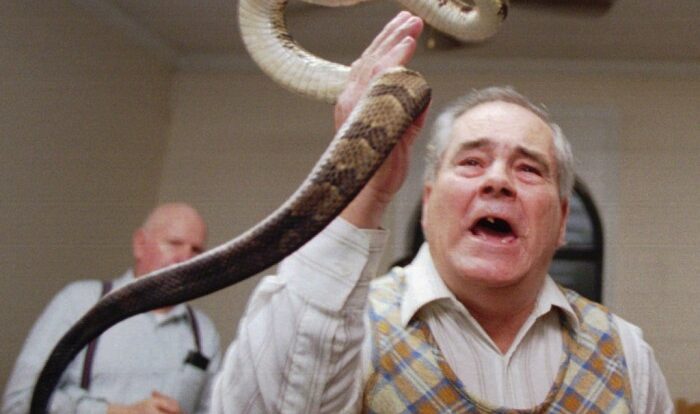
How to handle his snake yumi sin and fit kitty – Prepare to dive into the fascinating world of snake handling, specifically focusing on Yumi Sin, a species that combines the mystique of a snake with the cuddly charm of a kitty. We’ll guide you through every step, from understanding their behavior to creating the perfect habitat, ensuring a harmonious coexistence between you and your scaly companion.
Snake’s Behavior and Body Language

Snakes are fascinating creatures that exhibit a wide range of behaviors and body language. Understanding these cues can help you better care for your snake and ensure its well-being.Snakes are ectothermic, meaning they rely on external heat sources to regulate their body temperature.
As a result, they often engage in basking behavior, where they position themselves under a heat lamp or on a warm surface to absorb heat.Hiding is another common behavior observed in snakes. Snakes seek out hiding places, such as burrows, caves, or foliage, to feel secure and protected.
They may also hide when they are shedding their skin or feeling stressed.Feeding is a crucial behavior for snakes. When they are hungry, they will actively search for prey. Snakes use their sense of smell and heat detection to locate their prey.
Once they have found their target, they will strike and constrict it, using their powerful muscles to suffocate it.In addition to these basic behaviors, snakes also communicate through body language. Their posture, tongue flicking, and tail movements can all convey important messages.
It’s not always easy to know how to handle his snake yumi sin and fit kitty. But there are some things you can do to make it easier. First, try to understand their needs. What do they eat? Where do they like to sleep? Once you know their needs, you can create a routine that will help them stay healthy and happy.
You can also learn how to increase insurance agent productivity here . This will help you make more money and provide a better life for your pets.
Posture
A snake’s posture can indicate its mood and intentions. A relaxed snake will have a loose, sinuous body, while a defensive snake will coil its body tightly and raise its head.
Tongue Flicking
Snakes use their tongues to gather information about their surroundings. They flick their tongues out to collect scent particles, which they then analyze using a special organ called the Jacobson’s organ.
Tail Movements
Snakes use their tails to communicate a variety of messages. A twitching tail can indicate excitement or aggression, while a rattling tail is a warning sign.Understanding your snake’s behavior and body language is essential for providing proper care and ensuring its well-being.
By observing your snake’s cues, you can better understand its needs and create a safe and comfortable environment for it.
Handling Techniques for Safety
Handling snakes safely requires a combination of knowledge and proper techniques. To ensure your safety and the well-being of the snake, it is crucial to follow these guidelines when approaching, picking up, and releasing a snake.
Appropriate Safety Gear
Before handling any snake, it is essential to wear appropriate safety gear. Gloves protect your hands from potential bites, while snake hooks provide a safe distance between you and the snake. These tools help minimize the risk of injury and allow for more controlled handling.
Approaching the Snake
When approaching a snake, do so slowly and calmly. Avoid making sudden movements that may startle the snake. Observe its body language and posture to gauge its mood. If the snake appears defensive or aggressive, do not attempt to handle it.
Picking Up the Snake
- Position yourself behind the snake’s head and gently lift it from the ground using a snake hook.
- Support the snake’s body with your other hand, avoiding any pressure on its belly.
- Keep the snake close to your body to prevent it from falling or escaping.
Releasing the Snake
- Choose a safe location away from obstacles or potential hazards.
- Slowly lower the snake to the ground and release it gently.
- Monitor the snake’s movements to ensure it is not injured or distressed.
Creating a Suitable Environment

Snakes require a specific habitat to thrive in captivity. Understanding their environmental needs is crucial for their well-being. This section covers the essential elements of a suitable snake enclosure, including temperature, humidity, and substrate.
Temperature
Snakes are ectothermic, meaning they rely on external heat sources to regulate their body temperature. Providing a proper thermal gradient within the enclosure is essential. The gradient should offer a range of temperatures, with a warm end and a cool end.
The specific temperature requirements vary depending on the snake species, so it’s important to research the optimal range for your particular pet.
Humidity
Humidity is another important factor in snake enclosures. Different species have varying humidity requirements. Some snakes prefer dry environments, while others thrive in more humid conditions. It’s crucial to maintain the appropriate humidity level to prevent respiratory problems and other health issues.
Hygrometers can be used to monitor humidity levels.
Substrate
The substrate, or bedding, in the enclosure provides a surface for the snake to move on and hide in. Various types of substrates are available, each with its advantages and disadvantages. Aspen shavings, coconut husk, and cypress mulch are commonly used substrates.
The choice of substrate should be based on the species’ preferences and the desired humidity level.
Feeding and Nutrition
Maintaining a healthy diet is crucial for snakes’ well-being and longevity. Understanding their specific nutritional needs and feeding habits is essential for responsible snake ownership.
When you’re dealing with a tricky character like Yumi Sin, it’s important to know how to handle her. The same goes for Fit Kitty. You can find some great tips on how to handle both of these characters in this guide: how to handle his snake yumi sin and fit kitty . With the right strategies, you’ll be able to take down these opponents with ease.
Snakes are primarily carnivorous, meaning their diet consists mainly of animal prey. The type of prey varies depending on the snake species and size. Smaller snakes typically feed on insects, worms, and small rodents, while larger snakes may consume larger prey such as rabbits, birds, or even other reptiles.
I’ve got a snake named Yumi Sin and a kitty named Fit, and they’re both a handful. I’ve been reading up on how to handle them, and I’ve found some great tips that I’m going to try. I’ve also been looking into ways to increase my insurance agent productivity, and I found this great article how to increase insurance agent productivity that has some really helpful tips.
I’m going to try some of these tips out and see if I can boost my sales.
Feeding Frequency
The frequency of feeding depends on the snake’s size, species, and age. Juvenile snakes generally require more frequent meals than adult snakes. A general rule of thumb is to feed hatchlings every 5-7 days, while adult snakes can be fed every 7-14 days or even less frequently.
It’s important to avoid overfeeding, as this can lead to obesity and health problems.
Proper Nutrition
Providing a balanced diet is essential for maintaining a healthy snake. The prey should be appropriately sized and contain the necessary nutrients for the snake’s growth and development. Live prey is often preferred as it provides natural stimulation and exercise for the snake.
However, it’s important to ensure the prey is healthy and free from parasites or diseases.
Frozen or pre-killed prey can also be offered as an alternative to live prey. However, it’s important to thaw the prey thoroughly before feeding it to the snake, as cold prey can cause digestive issues.
Supplements such as calcium and vitamins may be necessary in some cases, especially for snakes that are not getting enough nutrients from their diet. It’s important to consult with a veterinarian or experienced snake keeper to determine the appropriate supplements for your snake.
Common Health Concerns
Snakes, like other animals, are susceptible to a variety of health issues. Some of the most common health concerns that snake owners may encounter include respiratory infections, skin issues, and digestive disorders. It is important to be able to recognize the signs of illness in your snake so that you can seek veterinary care as soon as possible.
Respiratory Infections
Respiratory infections are one of the most common health problems that snakes experience. These infections can be caused by a variety of factors, including bacteria, viruses, and fungi. Symptoms of a respiratory infection may include wheezing, coughing, sneezing, and difficulty breathing.
If you notice any of these symptoms in your snake, it is important to take them to a veterinarian as soon as possible.
Skin Issues
Skin issues are another common health problem in snakes. These issues can be caused by a variety of factors, including mites, ticks, and fungal infections. Symptoms of a skin issue may include redness, swelling, itching, and blisters. If you notice any of these symptoms in your snake, it is important to take them to a veterinarian as soon as possible.
Digestive Disorders, How to handle his snake yumi sin and fit kitty
Digestive disorders are another common health problem in snakes. These disorders can be caused by a variety of factors, including improper diet, parasites, and bacterial infections. Symptoms of a digestive disorder may include vomiting, diarrhea, and constipation. If you notice any of these symptoms in your snake, it is important to take them to a veterinarian as soon as possible.
Final Wrap-Up

In conclusion, handling Yumi Sin, the snake that fits like a kitty, requires a blend of knowledge, patience, and care. By understanding their behavior, implementing safe handling techniques, and providing an optimal environment, you can foster a fulfilling bond with your serpentine friend.
Remember, these graceful creatures deserve our respect and admiration, and with the right approach, you can create a mutually enriching relationship.
FAQ Resource: How To Handle His Snake Yumi Sin And Fit Kitty
What is the best way to approach a snake?
Always approach a snake calmly and slowly, avoiding sudden movements. Allow them to see your hand before attempting to handle them.
How often should I feed my snake?
The frequency of feeding depends on the species and age of your snake. Generally, adult snakes can be fed every 7-14 days.
What are the signs of a healthy snake?
Healthy snakes have clear eyes, smooth scales, and an active appetite. They should also shed their skin regularly.





